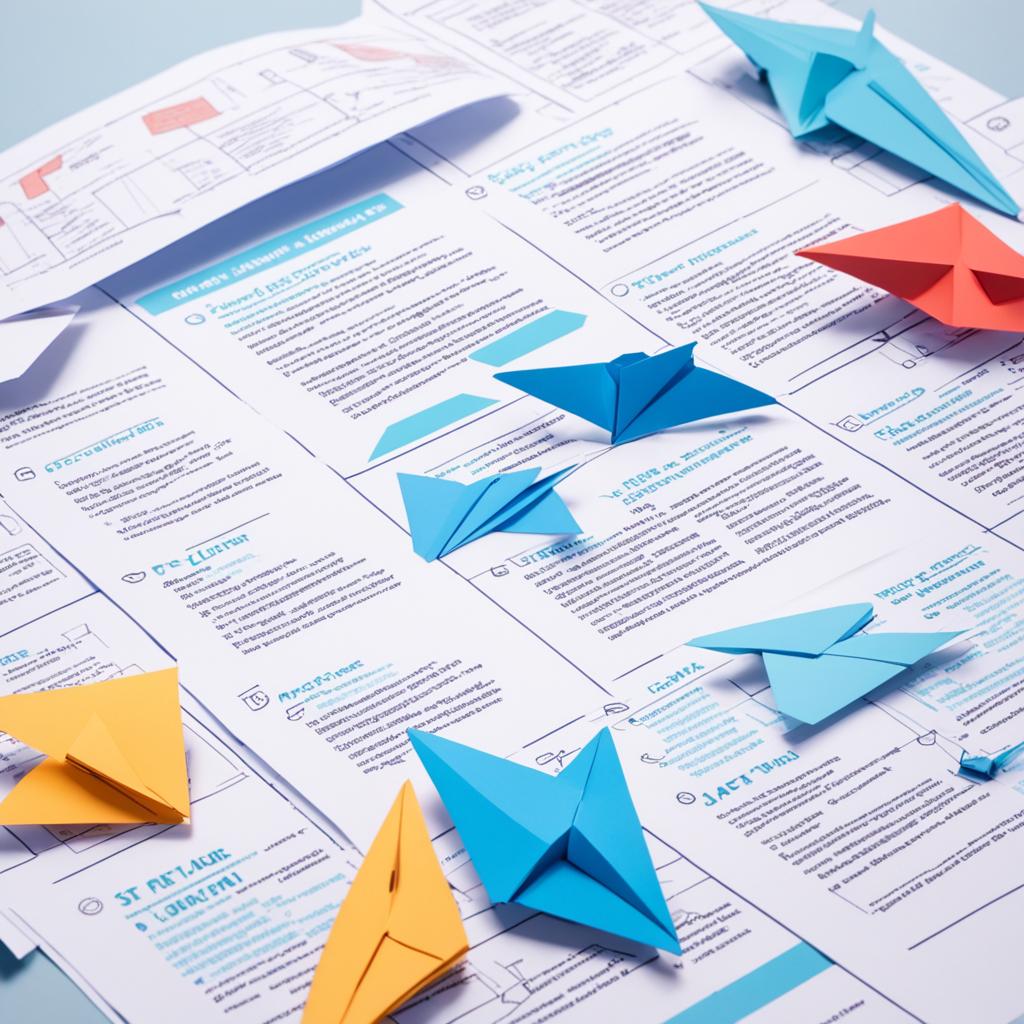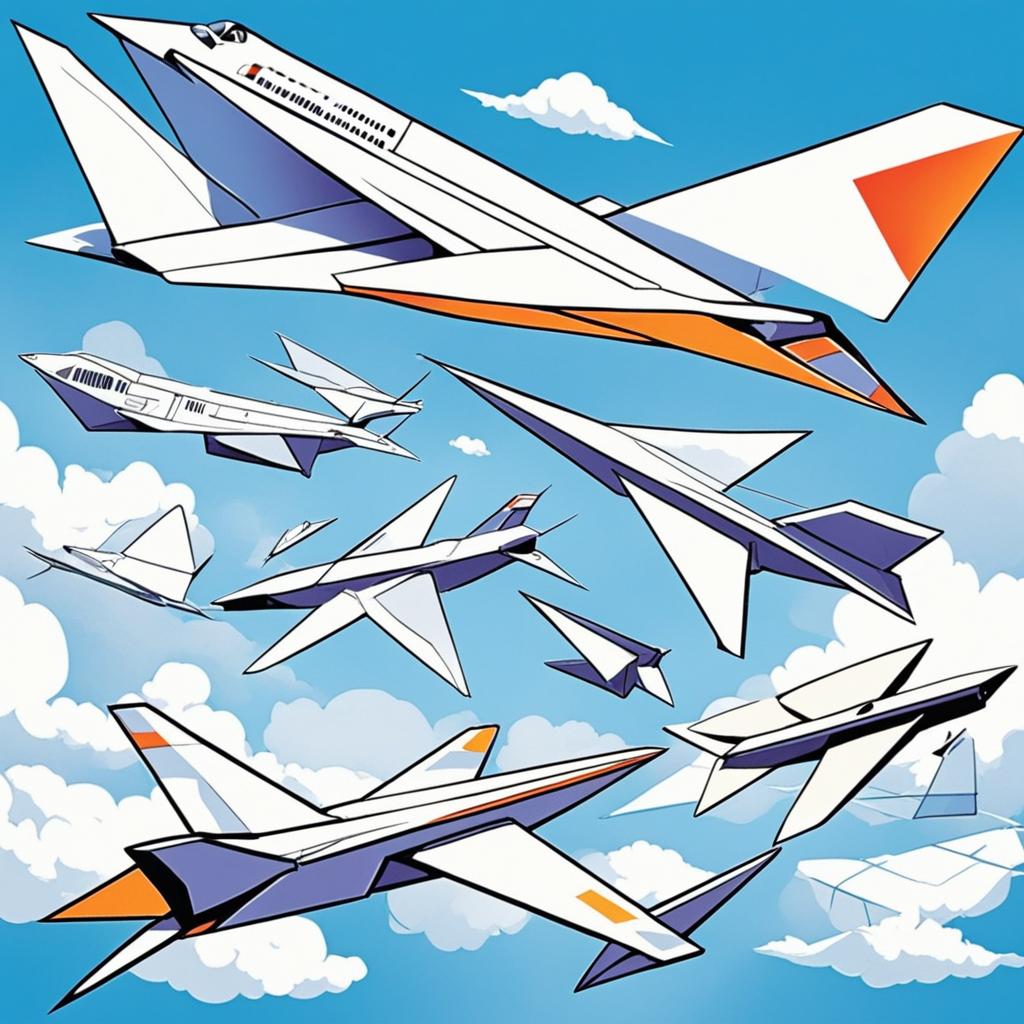Have you ever wondered what makes a paper airplane soar through the air or plummet to the ground? Is it all just a matter of luck, or are there specific factors at play? In this article, we will uncover the four key factors that determine the flight performance of a paper airplane and how understanding them can help you enhance its performance. So, are you ready to take your paper airplane-flying skills to new heights?
The Importance of Construction Material

The type of paper used to construct a paper airplane can greatly impact its flight. Different types of paper have varying properties such as weight, stiffness, and surface texture, which can influence how the airplane interacts with the air. Experimenting with various types of paper, such as printer paper, construction paper, and newspaper, can help determine how these different materials affect the flight performance. It is essential to note that lightweight paper generally allows for easier and longer flights, while heavier paper may result in shorter flights due to increased weight and drag.
When selecting the construction material for your paper airplane, consider its weight and thickness. Lighter paper will allow the airplane to stay aloft for longer periods due to reduced drag and increased lift. Templates with higher weight may result in quicker descents and limit the flight distance.
| Paper Type | Weight | Stiffness | Surface Texture |
|---|---|---|---|
| Printer Paper | Lightweight | Moderate | Smooth |
| Construction Paper | Medium to Heavyweight | Stiff | Rough |
| Newspaper | Lightweight | Flexible | Textured |
Experiment with different types of paper to find the material that best suits your desired flight performance. Additionally, consider the surface texture of the paper, as rougher textures can create more turbulence and affect the airplane’s stability.
The Angle of Lift Off

The angle at which a paper airplane is launched, also known as the angle of lift-off, can significantly impact its flight trajectory and distance. By adjusting the angle of lift-off, you can control the balance of lift and drag forces acting on the airplane. Launching the airplane at a higher angle can result in a steeper ascent and potentially more lift, while launching it at a lower angle may lead to a more horizontal flight path. Experimenting with different launch angles can help optimize the airplane’s flight performance.
When launching a paper airplane, the angle at which it takes off plays a crucial role in determining how it will soar through the air. By understanding the concept of the angle of lift-off, you can fine-tune your throwing technique to achieve desired flight characteristics.
When launching the paper airplane at a higher angle, you increase the angle of attack, which refers to the angle between the wings and the movement of the air. This higher angle creates more lift as the air meets the wings at a greater angle, generating an upward force that helps the airplane stay in the air for a longer duration. Higher angles of lift-off can result in a more parabolic flight path, allowing the airplane to reach greater heights before descending.
On the other hand, launching the paper airplane at a lower angle of lift-off tends to result in a more horizontal flight path. This angle causes the airplane to travel forward with less vertical gain, making it more suitable for covering longer distances. Lower angles of lift-off can be beneficial if you plan to compete in distance contests or want to achieve greater forward momentum.
The optimal angle of lift-off for a paper airplane depends on various factors, including the specific design, weight distribution, and aerodynamic properties of the aircraft. Since each paper airplane design has unique flight characteristics, experimenting with different launch angles can help you determine the best approach for achieving optimal flight performance.
It’s recommended to begin by launching the paper airplane at a moderate angle, around 25 to 35 degrees, and observe how it performs. From there, you can adjust the angle of lift-off incrementally to gauge the impact on flight trajectory and distance. Keep in mind that too steep of an angle can result in the airplane stalling or looping back towards the thrower, while too shallow of an angle may result in a quick descent.
By experimenting with different angles of lift-off, you can discover the ideal launch technique to maximize the flight performance of your paper airplane. Whether it’s soaring through the skies or covering impressive distances, mastering the angle of lift-off adds an exciting dimension to the art of paper airplane flight.
Atmospheric Conditions and Weather

The flight of a paper airplane can be influenced by various atmospheric conditions and weather factors. It’s essential to consider these factors to optimize the performance of your paper airplane.
- Air density: Air density plays a crucial role in determining the lift generated by the wings of a paper airplane. The denser the air, the more lift the airplane can generate. On the other hand, if the air density is low, the airplane may struggle to maintain lift and glide effectively.
- Temperature and humidity: The temperature and humidity affect the density of the air. Warmer air tends to be less dense, while colder air is denser. Humidity can also impact air density. To achieve optimal flight performance, it’s important to understand how temperature and humidity can influence the density of the air in which you’re flying your paper airplane.
- Wind speed and direction: Wind speed and direction can either help or hinder the flight of a paper airplane. A tailwind can provide an additional push, enabling the airplane to fly further, while a headwind can create resistance, reducing the airplane’s distance. Crosswinds can affect the stability and trajectory of the flight. It’s important to consider wind conditions when flying your paper airplane outdoors.
By taking into account the atmospheric conditions and weather factors, you can make adjustments to your paper airplane’s design and flight strategy to achieve better performance.
| Atmospheric Condition | Impact on Paper Airplane Flight |
|---|---|
| Air Density | Affects the lift generated by the wings. |
| Temperature and Humidity | Influence the air density, which in turn affects flight performance. |
| Wind Speed and Direction | Can either assist or impede the airplane’s flight depending on how they interact with thrust and drag. |
Tips for Enhancing Paper Airplane Performance
To optimize the performance of your paper airplane, there are several tips and techniques you can follow. Firstly, conduct consistent tests by launching the airplane from the same starting point and with the same amount of force. This allows for more accurate comparisons of different designs or modifications.
Secondly, experiment with varying sizes of paper airplanes to observe how size impacts distance and flight characteristics. You can create larger airplanes to see if they glide farther or smaller ones for more precise and agile flights. By exploring different sizes, you can uncover the ideal dimensions for optimal performance.
Additionally, try different folding techniques and design modifications to create unique airplane designs and discover their performance results. Experiment with altering the wing shape, adding flaps, or adjusting the weight distribution. These tweaks can enhance stability, lift, and aerodynamics, ultimately improving the airplane’s overall flight efficiency.
Last but not least, have fun throughout the process and enjoy the exploration of flight mechanics. Remember, paper airplanes are not only a fun activity but also an opportunity to learn about the principles of flight. Embrace the trial and error process, observe the effects of different adjustments, and let your creativity soar!


